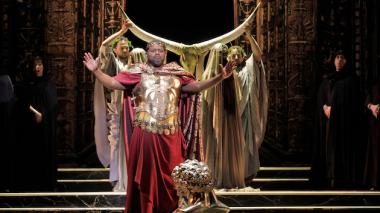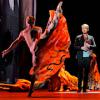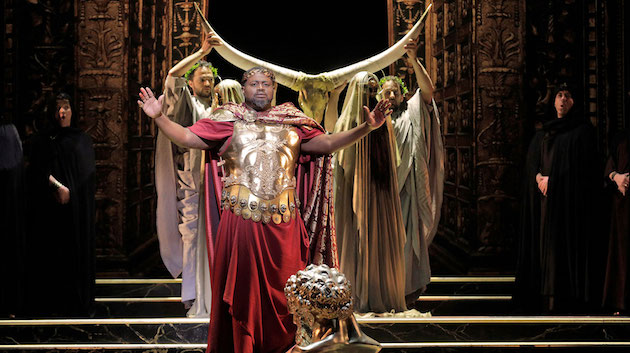
A great deal has been written about the last months of Mozart’s life and what he was able to accomplish in the fall of 1791, between September and the day of his death on Dec. 5th. The three masterworks always mentioned are The Magic Flute, the Clarinet Concerto in A, and the never to be completed Requiem.
And then there’s La Clemenza di Tito (The Clemency of Titus), the opera commission he received to celebrate the coronation of Emperor Leopold II in Prague — a commission he accepted and miraculously completed in 18 days (with recitatives supplied, perhaps, by Franz Xavier Sussmayr). Of all the works Mozart created during that last burst of creative genius, La Clemenza di Tito has received the least attention. The first American staging didn’t take place until 1952.And even though it now receives 18-20 productions a year around the world, it’s still rare compared with other operas from Mozart’s Vienna years.
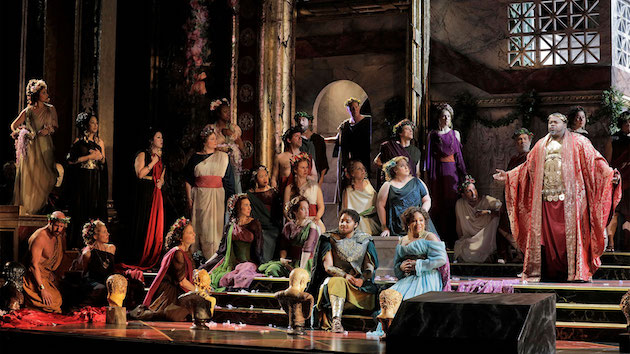
So Saturday was a wonderful night of firsts, as Los Angeles Opera presented its first production of La Clemenza di Tito, and James Conlon, whose Mozart performances number in the thousands, conducted the opera for the first time.
The performance at the Dorothy Chandler Pavilion placed Mozart’s opera in the hands of a conductor who was more than ready to share his newly found insights. Equally important, it brought together a stellar cast led by tenor Russell Thomas as the benevolent Emperor Titus, a visually stunning production directed and designed by Thaddeus Strassberger, opulent costumes by Mattie Ulrich, and background projections of classical paintings by Greg Emetaz. It climaxed with a Pageant-of-the-Masters-style recreation of a Roman spring festival. The actual painting, Lawrence Alma-Tedama’s Spring, can be seen at the Getty Museum.
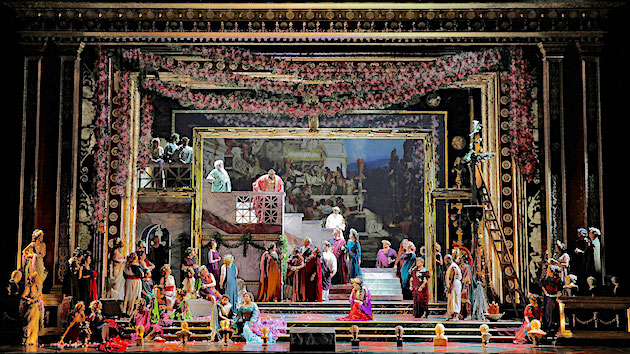
Throughout the performance, Russell brought the same level of vocal and dramatic intensity to his role that he brought to his Hollywood Bowl appearance as Verdi’s Otello. Russell projected a commanding presence on stage. He was somewhat less convincing, when the Emperor’s mood turned introspective and called for a more elegant Mozartian line.
There was, of course, one element missing from the Los Angeles production that Mozart would have found indispensable — those unique vocal mutations, the castratos, whose rock-star personas and vocal capacities we can only imagine. Modern opera companies substitute a mezzo-soprano, and L.A. Opera’s production features a dazzler, Elizabeth DeShong, in the role of love-struck, would-be assassin, Sextus.
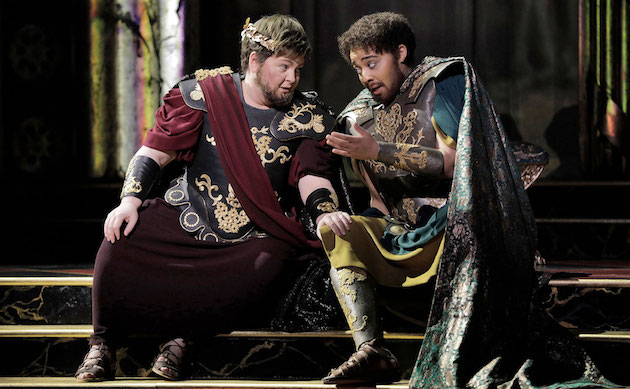
DeShong may not tower above the cast physically, but vocally she is a tower of power. Her low notes can resonate like a growl, her high notes soar, and she can reel off coloratura ornamentation at light speed. Her showpiece aria, “Parto, parto” with its virtuoso clarinet accompaniment (performed by Stuart Clark) was stunning.
The villainess of the piece is Vitellia, sung by soprano, Guanqun Yu. Both elegant and menacing, she stalked the stage like a Roman incarnation of Lady Macbeth, spinning her intrigues and convincing her addictively attracted lover, Sextus, to do her bidding.
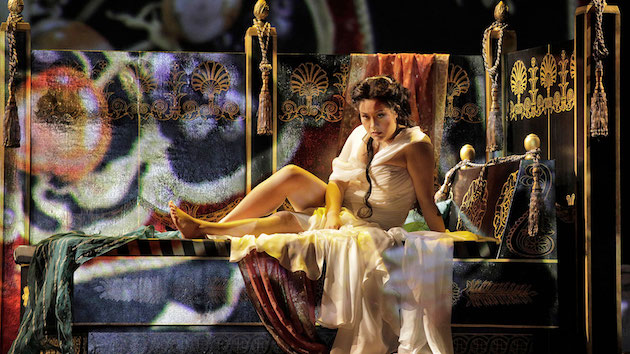
The second trouser-role, Annio, was sung with male-bonding fervor by Taylor Raven; The woman in his life, Servilia was given a dulcet rendition by Janai Brugger. The Captain of the Guard, Publio, was sung with resonance by James Creswell.
The brightest star of this production has to be James Conlon. The illuminating performance he conducted combined the light, melodic rapture of Cosi fan tutte, the Masonic-inspired humanity of The Magic Flute, and the magnitude of the Requiem.
They say that timing is everything. And what better time could there be to present this opera that emphasizes the role an enlightened, compassionate leader can play in the governance of a nation.
Correction: An earlier version of the article misidentifed the projection designer as JAX Messenger. Greg Emetaz designed the projections for this production.

